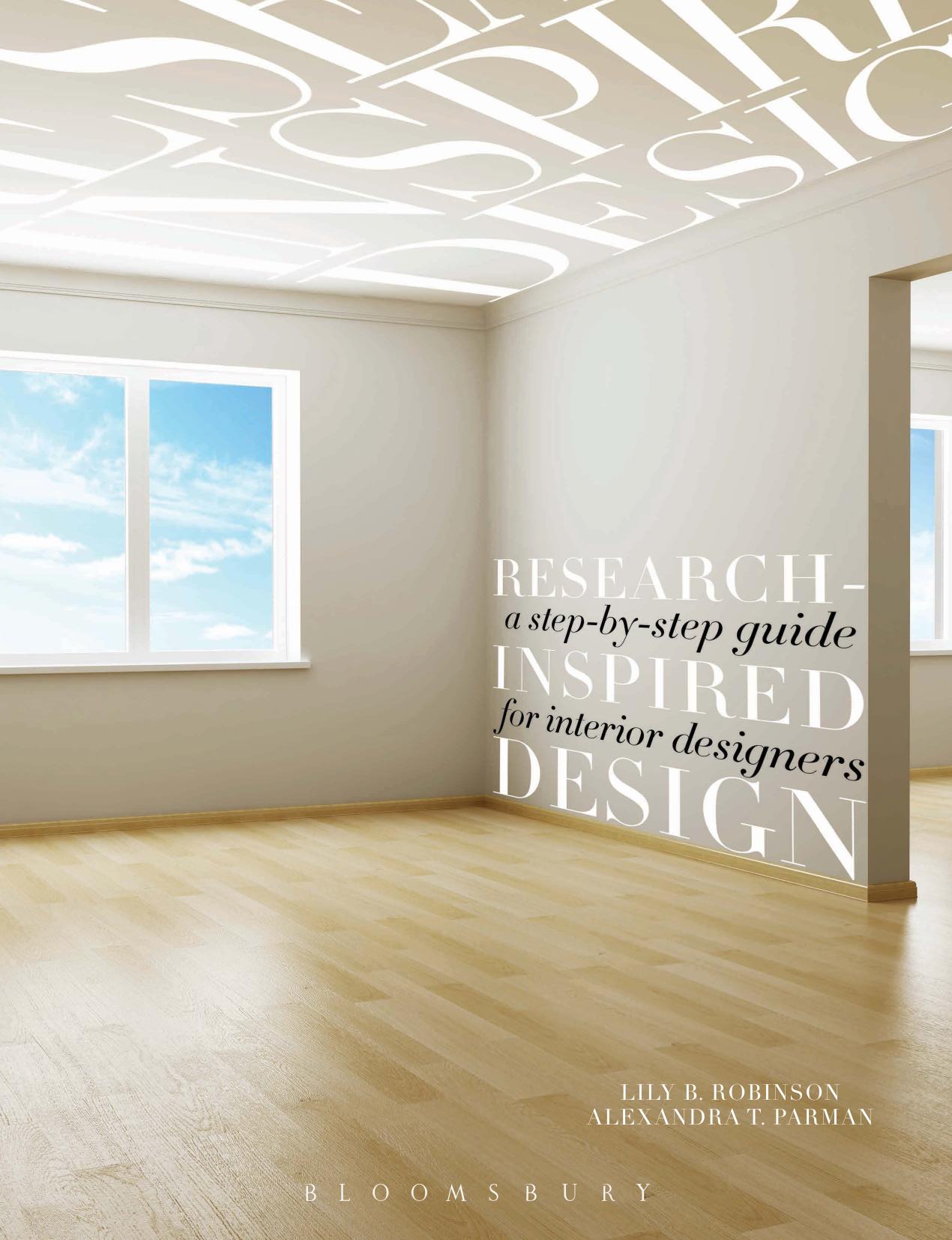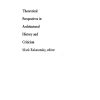Research Inspired Design A Step by Step Guide for Interior Designers 1st edition by Lily Robinson, Alexandra Parman 1501310305 9781501310300
$70.00 Original price was: $70.00.$50.00Current price is: $50.00.
Instant download Research Inspired Design A Step by Step Guide for Interior Designers Lily B. Robinson & Alexandra T. Parman after payment
Research Inspired Design A Step by Step Guide for Interior Designers 1st edition by Lily B. Robinson, Alexandra T. Parman – Ebook PDF Instand Download/DeliveryISBN: 1501310305, 9781501310300
Full dowload Research Inspired Design A Step by Step Guide for Interior Designers 1st edition after payment

Product details:
ISBN-10 : 1501310305
ISBN-13 : 9781501310300
Author: Lily B. Robinson, Alexandra T. Parman
This textbook/workbook prepares interior design students for understanding how to change their professional practice from a project-based activity to a knowledge-based activity. Robinson and Parman address the different forms of quantitative and qualitative information, the different sources of materials (especially in the age of the Internet), and how to differentiate these sources and types of information. Instructors will find the text a vital research aid for the student to develop analytical skills and help them transform these scientific models into unique and innovative processes for their design projects. Student resources featuring sample projects and documents and additional resources can be found at https://www.fairchildbooks.com/studio-resources
Research Inspired Design A Step by Step Guide for Interior Designers 1st Table of contents:
Part One
Planning Your Research
1 Why Research?
The Information Age
Research-Inspired Design
Research as an Everyday Experience
Dissecting the Interior Design Process
Design as a Circular Process
Translating Research into a Design Solution
Subjectivity Versus Objectivity
Design as Creative Problem-Solving
Everyone Should Have a Design Degree!
Identifying a Problem Is Your Primary Goal!
Examples of Interior Design Problems
How to Identify an Interior Design Problem
Conclusion
References
2 Systems of Inquiry
Beginning Your Research Journey
Cultural Capital and the Value of Personal Exploration
Understanding Your Point of View
The Role of Value Systems
Value Systems and Assumptions: Should It Be? Versus Could It Be?
Systems of Inquiry
Systems of Evaluation
Subjective Reality Versus Objective Reality
Systemization of Research
Sizing Up Our World: Objectivity and Relativity
Quantitative Information Versus Qualitative Information
Conclusion
References
3 Meaningful Influences
Design Context
What Is Design Philosophy?
Developing Your Personal Design Philosophy
Understanding Theory
Understanding Paradigms
Understanding a Testable Hypothesis
Conclusion
References
4 Brainstorming
Your Professional Identity
Nurture Your Delicate Ideas
Dive into Your Strengths!
Identify a Problem to Solve
Brainstorming and Creativity
Concept Mapping
Identifying Your Research Topic
Narrowing Your Research Topic
Turning Your Research Topic into a Research Question
Seeking Innovation
Seeking Inspiration
References
Part Two
Information Gathering
5 Identifying Information Sources
Identifying Information and Research Sources
Formal Research Methods Versus Informal Research Methods
Primary Sources Versus Secondary Sources
Primary Sources
Secondary Sources
Judging the Validity of a Source
Making Research Work for You
Conducting a Literature Review
The Value of a Working Bibliography
Acknowledging Sources and Avoiding Plagiarism
Information Communication and Citation Formats
Bibliographical List of Works Cited
The Role of the Internet in Data Gathering
Online Databases
Library Catalogs
Archives
Selecting the Most Promising Resources
Conclusion
References
6 Interviews
Conducting Interviews
Types of Interviews
Successful Interviews
Degrees of Formality
The Questions You Ask
Concluding and Reconstructing the Interview
Current Trends in Alternative Interviewing Techniques—Non-Verbal or Image-Based Interviews
Sorting Techniques
Interactive Interviewing Trends: User-Generated Imagery
Practicing What You’ve Learned
Conclusion
References
7 Surveys
Types of Questionnaires for Interior Design
Client (or Potential Client) Questionnaires
End User Questionnaires
Target Market Questionnaires
Focus Group Questionnaires
Popular Opinion Questionnaires
Questionnaire Design and Distribution Methods (The Act of Surveying)
Sampling—Establishing a Sample
Types of Questions
Pretesting Your Questionnaire
Analyzing the Data
Practicing What You’ve Learned
Conclusion
References
8 Observation
Gathering Evidence: Past and Present
Types of Observation
Casual Observation
Systematic Observation
Place-Centered Mapping
Person-Centered Mapping
Trace Observation
Observing the Mind and Human Behavior
Case Studies
Conclusion
References
Part Three
Programming
9 Research-Inspired Design
The Interior Design Thesis
What Is a Thesis?
Developing a Thesis Statement
Writing Your Thesis Proposal
Using Research to Develop Your Thesis Project Type
Scale Versus Scope
Developing a Client Profile
What Should Your Client Profile Include?
Developing a User Profile
What Should Your User Profile Include?
Conclusion
References
10 The Written Program
Closing the “Synthesis Gap”
What Is Programming?
What Is a Program?
Programming Step by Step
The Cycles of Analysis and Synthesis
Form, Function, Economy, Time
Exploring the Five Steps of Programming
Step One: Collecting and Analyzing Facts
Step Two: Establishing Goals (Analysis)
Step Three: Determining Needs (Analysis)
Step Four: Uncovering and Testing Concepts (Synthesis)
Step Five: Stating the Problem (Synthesis)
Professional Program Formats
Activity-Based Program Versus Spatially Based Program
Creating a Programming Document
Tips on Developing the Equipment List
Tips on Developing the Short Program
Tips on Developing the Long Program
Establishing Relationships: Criteria Matrix and Relationship Diagrams
Effective Communication of the Program
Conclusion
References
11 Site Selection and Analysis
Does Your Building Fit Your Program?
Site Selection
The Nature of the Site: Surrounding Influences
“Site-Specific” Versus “Siteless”
Site Data Collection
The Region: Site Data Collection for Context
The Locale: Site Data Collection Within a Small Radius Around the Property in Question
The Building Site: Data Collection Within Property Boundaries
The Interior Space: Site Data Collection Within Building Shell
Sources of Site Data
Sources for Regional Data
Sources for Locale Data
Sources for Property Data
Sources for Data Within the Building Shell
Site Summary
Data Analysis and Interpretation
Conclusion
References
Part Four
Design
12 Schematics
The Schematic Design Phase
Revisiting the Role of the Design Concept
Generating Multiple Solutions
Diagrams
Diagrams Used for Analysis
Diagrams Used for Synthesis
Other Types of Exploratory Diagrams
Conclusion
References
13 Design Development
The Design Development Phase
Codes Research for Interior Design
Zoning
Use/Occupancy Classification
Means of Egress
Accessibility
Special Use
Asking the Experts
Furniture, Fixtures, and Equipment
Colors and Materials
Incorporating Color Theory
Representing and Communicating Your Design
Conventional Drawings
Unconventional Drawings
Storyboarding
Putting It All Together
Conclusion
References
14 Design as a Circular Process
Using Research as a Strategy for a Successful Presentation and Defense
Responding to and Incorporating Feedback
Applying Research During Contract Documents and Contract Administration
The Consultation Process: Seeking Expertise
People also search for Research Inspired Design A Step by Step Guide for Interior Designers 1st:
step in research design
a research design example
how to design a research study
a research design is an
a research design is a detailed plan


